The epitome of Viennese extravagance and luxury, the Schonbrunn Palace was once the home of the Austro-Hungarian emperors. The palace's history fascinates both tourists and locals, so much so that it has become Vienna's most prominent attraction. The palace and its vast grounds are considered the most important architectural and historical monuments in the country.
"The palace is magnificent, the furniture befitting of a queen and in the best of taste. The gardens have everything that art has ever created".= John Edler von Kurzbock
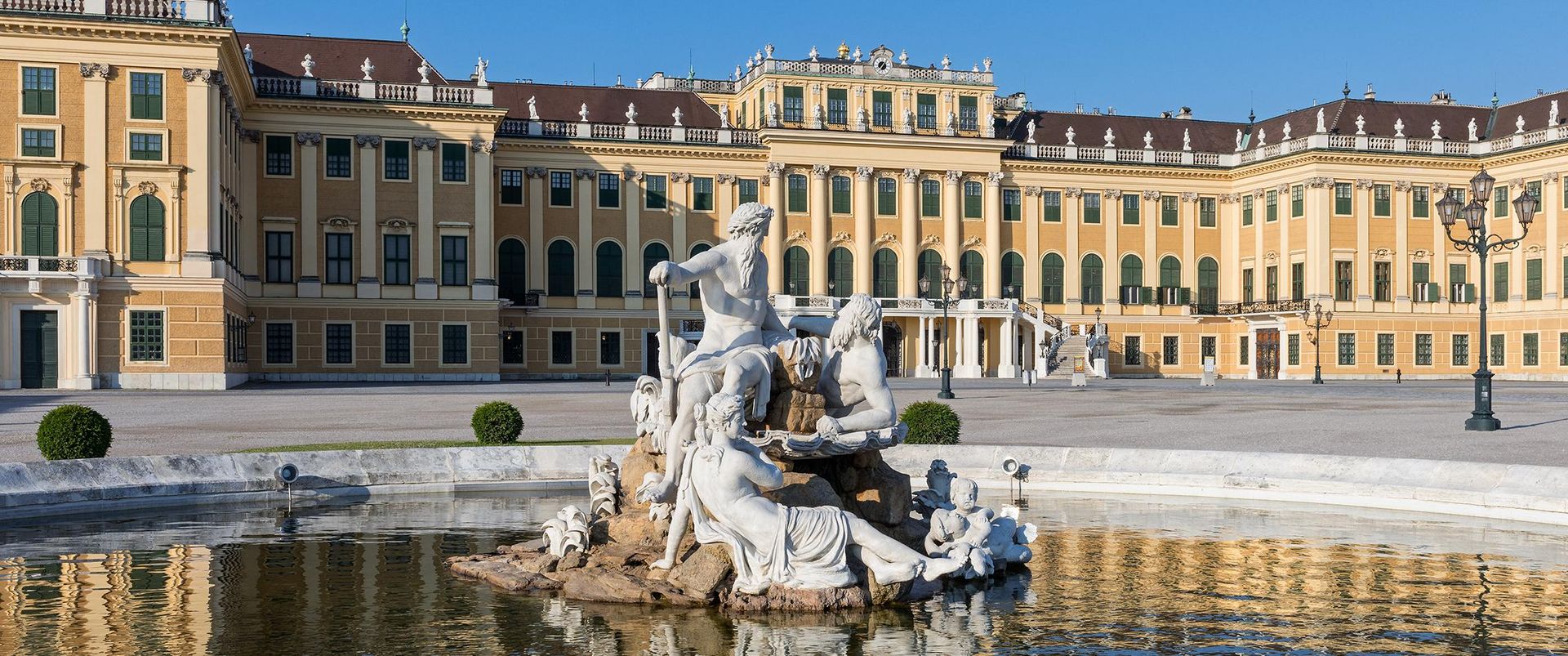
The Schonbrunn Palace is a UNESCO World Heritage Site and is one of the most popular attractions in Austria. For centuries the palace served as the summer home of the monarchs and to this day, it reflects the tastes and interests of the Hapsburg Royals. The palace is considered as the most impressive Baroque palace complex in Europe and is also the country's most significant cultural monument.
A lot of people who have visited the palace can't help but compare it to the Palace of Versailles in France. It is even referred to as the "mini Versailles.” Although noticeable less extravagant, it has various interesting rooms and spaces.
Expect beauty, elegance and luxury when visiting the palace. There are many rooms to explore and secrets to discover. There are also magnificent gardens which make for Instagram-worthy pictures. As with any tourist destination, you can also expect a lot of tourists.
There are various ways to explore the palace and there are different packages offering accessibility. There are various tours to choose from, so you can decide how close you want to get to the palace and all that lies within.
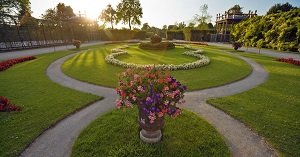
Opened to the public in 1779, the park and gardens have been a popular recreational area for the Viennese population. It extends approximately 1.2 km from the east to the west and approximately one kilometer from north to south. Arranged in the French style, the garden is a symphony of colors in the summer and a combination of browns and greys in the winter.
The sculptured garden space is located between the palace and the Neptune Fountain and is called the Great Parterre. A big part of the area is occupied by the French Garden which was planned by Jean Trehet, a disciple of Andre Le Notre. It contains among other things, a maze. The entire complex has many other attractions, such as an orangerie and a palm house. At the outmost western edge is a botanical garden.
Like most of its predecessors, the baroque garden at Schonbrunn was created as a demonstration of power and ambition to outshine Versailles. Located directly next to the palace on the east side is the Crown Prince Garden. It got its name from the apartment created for the use of Crown Prince Rudolf.
Petite and low-cut boxwood hedges surround the neatly placed flower beds, as well as fields of colored stones. Surrounded by a pergola, the garden is also overgrown with wild vines. There is a modern viewing platform which allows visitors to admire the flowers. Open every day from March to early November, there is admission fee for the gardens.
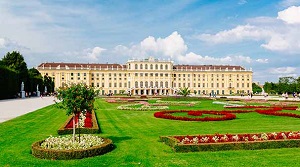
The zoo inside the vast palace complex dates as far back as Francis I's rule. It was founded in 1752, making it the oldest zoo in the world. it is home to more than 750 species such as pandas, orangutans, African elephants, Siberian tigers, koalas, penguins, cheetahs, and arctic wolves. The erstwhile 13 walled animal enclosures have been replaced by modern facilities and more natural habitats over time.
The zoo is open daily, even on public holidays, from 9 am until 4:30 or 6:30 pm, depending on the season. The ticket office closes 30 minutes before closing time, which is also the latest entry time for the zoo. Tickets can be bought online or at the ticket office.
The Schonbrunn Palace Orchestra awaits visitors daily at 8:30 pm at the Palace Orangery where Mozartand Salierihimself once performed in 1786. Visitors can look forward to a fine selection of masterful music by Strauss and Mozart, with vocal and dance performances.
The first part of the concert is made up of arias, marvelous overtures, and duets from the operas created by Wolfgang Amadeus Mozart, such as "Die Zauberflote” and "Le Nozze di Figaro.” The second part, on the other hand, is mostly comprised of operetta arias, polkas and waltzes from "Donauwalzer” and "Radetskymarsch.”
The orchestra is accompanied by two opera singers, a baritone and a soprano, and tweo ballet dancers. The daily concert plays a pivotal role in the musical and cultural life of the Viennese people. Ticket prices are as below:
Schonbrunn Palace is open daily, even on public holidays. If you would like to avoid queues at the ticket office, pre-book an online ticket.
Ticket sales start at 8:00 am and admission to the display room starts at 8:00 am. Last admission to all attractions is 45 minutes before closing time. We regret that dogs cannot be taken into either the Palace or the Park.
There are several ways to get to the Schonbrunn Palace. For those who would like to take public transport, there are three options:
Station Meidling, take the northbound U6 underground line and alight at Langenfeldgasse, then change to Westbound U4 underground at alight at Schonbrunn
The first construction phase started in 1743 and ended in 1749 and it was carried out in close collaboration with Nikolaus Pacassi. He led the project and was eventually appointed as court architect in 1749. Work started on the imperial apartments in the East Wing with audience rooms, as well as residential suites for Maria Theresa and Franz Stephan. Although there are 1441 rooms in the palace, only 40 are open to the public for viewing.
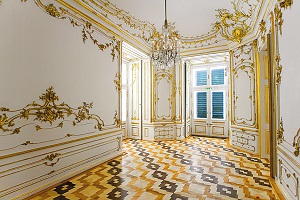
These rooms are the perfect venue for special events. These four rooms can be hired for special events such as concerts, cocktail receptions, dinners, or presentations. The largest of the four event rooms on the ground floor boasts the widest variety of uses. It is also a popular venue for civil marriage ceremonies. Decorated in the 1760s until the 1770s, it is an outstanding example of Rococo craftsmanship.
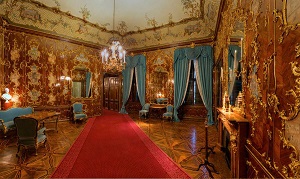
The Millions Room got its name because of the precious paneling made from an exotic type of tropical rosewood that was called ‘Vicatin' or ‘Fekatin'. It served as Maria Theresa's private reception room and before that it has been a small cabinet of mirrors, created when the hunting lodge was rebuilt as a summer residence. Set into the paneling are sixty collages made from seventh-century Indo-Persian miniatures in cartouche-like frames. From the Millions Room, visitors may view the Miniatures Cabinet, hung with small watercolours and gouaches which were executed by Maria Theresa's children and husband, Franz Stephan.

This room belonged to the apartments occupied from 1837 to 1873 by Franz Joseph's parents. Hung with a few formal family portraits, the room is furnished in the Biedemeierstyle. Made to designs by David Teniers the Younger, they had been transferred to Vienna from the royal palace in 1850. The room has remarkable tapestry-upholstered chairs which displays a representation of the twelve different months of the year, as well as signs of the zodiac, which were added to the room's furnishings at the same time.
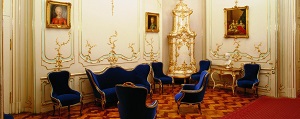
This room was furnished for Franz Joseph's mother and it is typical of the post-1840 period. The interior is decorated in the Rococo Revival and contains several mementos and portraits. The only original furniture still contained in the room today is a lady's secretaire with elaborate mother-of-pearl inlay, a great example of the superb quality of Viennese craftsmanship in the nineteenth century.
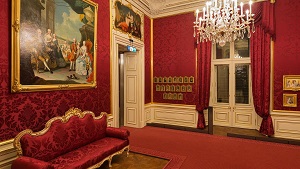
The Red Salon contains portraits of various Hapsburg emperors, including that of Leopold II, who reigned briefly. Currently decorated with white and gold paneling and red court damask wall hangings, the room served as a clothes cabinet during Maria Theresa's time.
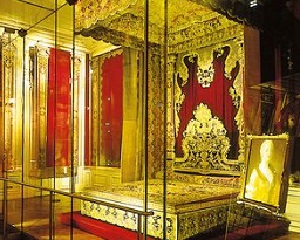
This north-facing room was occupied by Crown Prince Ferdinand and his wife Maria Anna until 1835. Exhibited in the room today is the only surviving bed of state from the Viennese court.
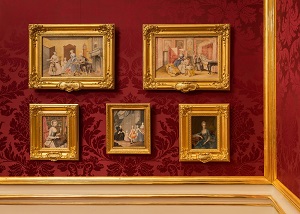
Once occupied by Archduke Franz Karl, the father of Emperor Franz Joseph, from 1835 to 1878, the rooms were refurbished in the white, gold, and red scheme typical of the Viennese court. From then until the end of the Monarchy, the rooms served as official reception rooms. There are several paintings in this room, including those of Maria Anna, Alexander of Lorraine, Elisabeth Christine, Franz Stephan, and Countess Fuchs.
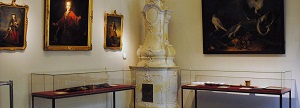
Designed as a hunting lodge, it has paintings and exhibits in the display cases illustrating the subject of hunting and the imperial family.
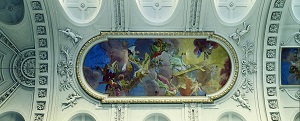
The palace still retains the original spatial structure and architectural arrangement given to it by architecture Johann Bernhard Fischer von Erlach. Maria Theresa refurbished the palace chapel and during their reign, participation services was an indispensable part of daily life in the court, as per Hapsburg tradition.
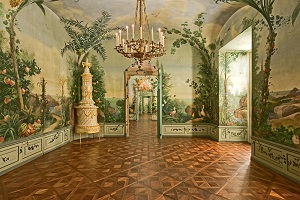
As Maria Theresa grew older, she suffered increasingly from the heat during summer months. In the last decade of her life, she has a suite furnished for herself on the ground floor of the palace, facing the gardens. She engaged the Bohemian artist Johann Wenzel Bergl to decorate the rooms.
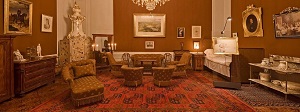
A highlight in the tour, the bedroom has a simple soldier's bed in which the Emperor himself died on the 21st of November 1916, after a reign of 68 years.
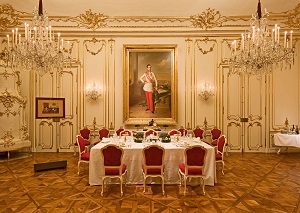
The room got its name because Napoleon famously stayed there. It has a celebrated portrait of Francis I displaying the insignia of the Order of the Golden Fleece. It also served as the dining room of the royal family.
The Schonbrunn Palace is one of the most important structures in Austria and millions of people visit it annually. Any visit to Vienna is incomplete without at least getting a glimpse of the world-renowned palace. It is important that you take some time to plan your trip so that you can make the most of it, enjoy it, and do not spend more than what you need to.
Book your tickets in advance. Although you can purchase your tickets at the gate, the last thing you want is to spend a long time in the queue, time you could have used exploring the palace to your heart's content. Avoid the crowds by keeping an eye on major events and festivals taking place in Vienna so that you don't have to share your time with them.
Yes, skip-the-line tickets are worth the price. They may cost you more money in the end, but you will find that they are excellent deals. Not having to queue and getting instant access to the palace will save you the time and headache. Take advantage of Vienna attractions tickets and the Vienna pass.
Peak season is from April to September and there is a particular spike between July and August. Try to avoid these busy months as the Schonbrunn Palace is always overcrowded, being the top destination in the capital. January and February see the lowest number of visitors and your visit will be much more intimate during this period. March and November could be a good compromise because there is mild weather and thin crowds. Vienna is also a popular destination during the holiday season, so it is not a good decision to come during the second half of December.
The Schobrunn Palace is massive and if you really want to get a style of its history, it is best that you opt for guided tours. By joining a guided tour, you get access to the rooms, as well as get their background story from an expert guide or an audio guide. There are various tours to choose from and they are:
Adult - €11.50
Children - €8.50
Adult - €14.50 (with audio guide) or €16.50 (in a group with a guide)
Children - €9.50 (with audio guide) or €11.00 (in a group with a guide)
Adult - €25.50
Children - €15.00
Schonbrunn Palace is massive and its sheer size means you have to do a lot of walking.
The Schonbrunn Palace, although the most popular attraction in Vienna, is just one of its many tourist spots. There is still a lot to discover in the city and with the help of Vienna tourist maps and a little search on the Internet, you will be able to find all these other gems that the city boasts of. Other attractions worth seeing are the following:
This is the same church where Mozart was married in 1782 and has played an important role in the spiritual and worldly affairs of the Viennese. The cathedral has stood watch over the city for more than 700 years and it is one of the most revered landmarks of the country.
Built in the early 18th century by the famous Baroque architect Johann Lucas von Hildebrandt as a summer residence for Prince Eugene of Savoy, it is one of Eruope’s most stunning landmarks.
One of the leading opera houses in the world, the Vienna State Opera House has a past that is steeped in history. Each season features more than 300 performances from 60 different operas and ballets.
One of the largest museums and non-university research institutions in the country, the Natural History Museum is also an important center of excellence for matters relating to natural sciences.
The Imperial Crypt is located below the Capuchin Church and was only intended to hold only the remains of Empress Anna and Emperor Matthias. It has been expanded many times over to accommodate more royal remains.
The Hofburg is the former principal palace of the Habsburg dynasty and currently serves as the official residence and office of the President of Austria. Located in the center of Vienna, it was built in the 13th century and has been expanded several times.
This document has been edited with the instant web content composer. The online instant HTML editor tools make a great resource that will help you a lot in your work. Save this link or add it to your bookmarks.